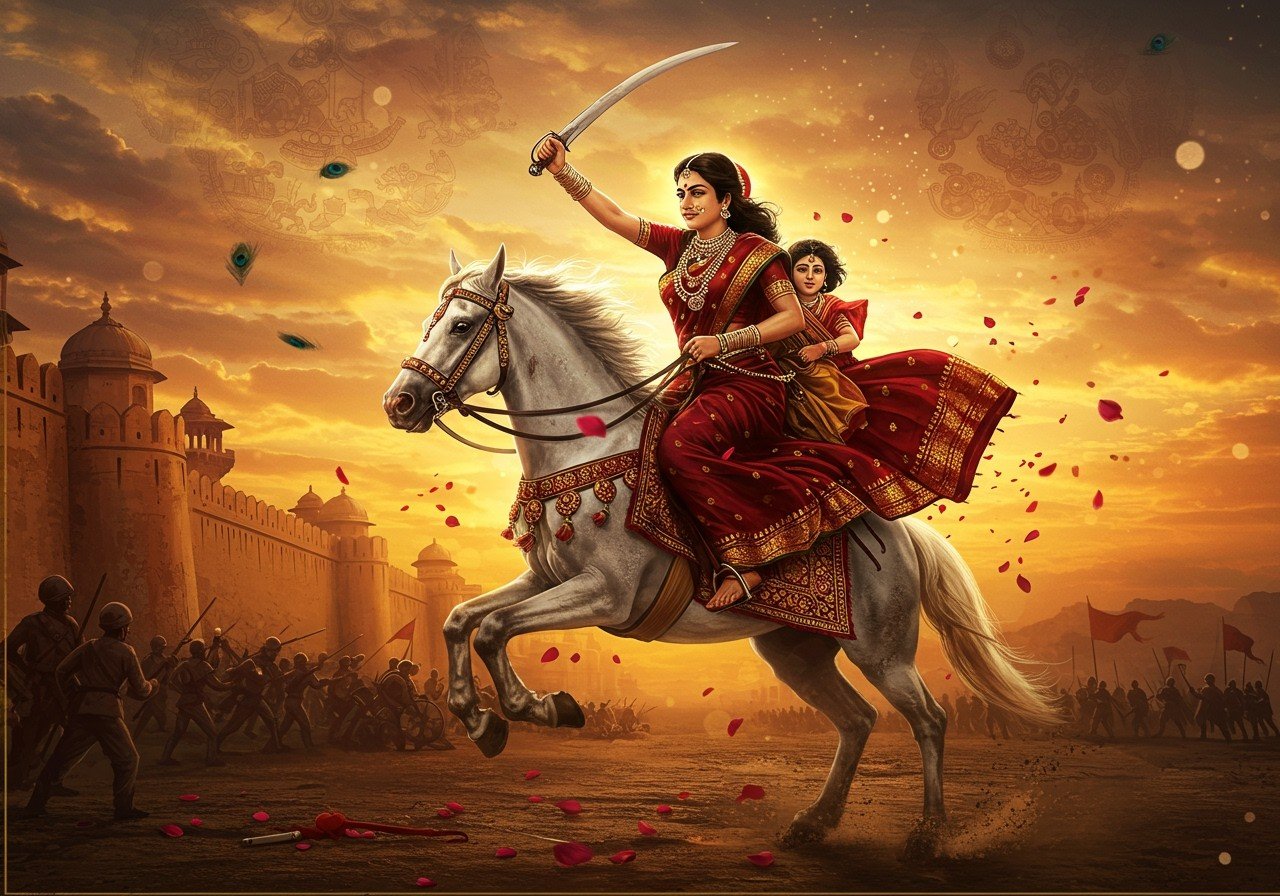
Rani Lakshmi Bai, often referred to as Jhansi ki Rani, remains a powerful symbol of bravery and resistance in Indian history. Her compelling life story, as a warrior queen who defied British colonial rule, continues to inspire generations. Delving into her journey offers valuable insights into the cultural and historical landscape of 19th-century India. Her significant contribution to Indian nationalism and her enduring symbolic presence in contemporary society remain remarkably relevant.
Early Life and Formation of a Warrior
Born Manikarnika Tambe on November 19, 1828, in Varanasi, Rani Lakshmi Bai’s life was extraordinary from the start. Raised in a Marathi Karhade Brahmin family, her upbringing defied conventional norms for women of her era. She received a unique education that included martial arts, horsemanship, and sword fighting, skills that would shape her destiny. After her mother’s passing when she was four, her father, who worked for Peshwa Baji Rao II, nurtured her independent spirit and ensured she was well-educated, learning to read and write in addition to martial arts. This formative period laid the groundwork for the courageous leader she would become.
From Princess to Queen: Leadership and Loss
In May 1842, Manikarnika married Maharaja Gangadhar Rao of Jhansi, thus becoming Rani Lakshmi Bai. As queen, she demonstrated exceptional administrative abilities and a deep commitment to her people. She implemented various reforms, showcasing her leadership and concern for the welfare of her kingdom. However, tragedy struck in 1851 with the death of her son, Damodar Rao, just four months after his birth. The couple then adopted a son, also named Damodar Rao, a decision that would later become a point of contention with the British.
The Spark of Rebellion: Defying the Doctrine of Lapse
The British East India Company’s refusal to recognize Rani Lakshmi Bai’s adopted son as the heir to Jhansi led to the annexation of her kingdom under the Doctrine of Lapse. This act of injustice became the catalyst for her fierce resistance and active participation in the Indian Rebellion of 1857. Explore the rich history of resistance and resilience within Indian traditions. Lakshmi Bai’s defiance marked a turning point, transforming her from a grieving queen into a symbol of rebellion against colonial oppression.
A Warrior’s Stand: Leading the Charge
Rani Lakshmi Bai’s bravery on the battlefield became legendary. Her daring escape from Jhansi on horseback with her infant son is a testament to her courage and determination. She joined forces with other rebel leaders, including Tatya Tope, in Kalpi. Together, they strategized and fought against the British, eventually capturing the fort of Gwalior in a display of tactical brilliance. Learn more about historical figures and their complex roles.
The Final Battle and an Enduring Legacy
On June 18, 1858, in Gwalior, Rani Lakshmi Bai made her final stand. Dressed as a soldier, she fought valiantly against overwhelming odds, ultimately falling in battle at the young age of 29. Discover stories of courage and sacrifice from Indian epics. Her death marked a significant loss for the rebellion, but her sacrifice solidified her place as an icon of courage and resistance. Today, Rani Lakshmi Bai is celebrated as a national hero, her story woven into the fabric of India’s fight for independence.
Remembering a Hero: Puja Items and Rituals
Honor the legacy of Rani Lakshmi Bai with authentic puja items from Poojn.in. Our collection includes:
- Brass Diyas and Incense Holders: Symbolize the eternal flame of her courage. Find exquisite brass items here.
- Pure Cotton Wicks and Premium Ghee: Essential for performing aarti in her memory. Shop for pure cotton wicks on Poojn.in.
- Traditional Agarbattis and Dhoop: Create a sacred atmosphere during prayer. Enhance your puja with natural incense.
- Brass Statues and Frames: Create a dedicated altar for meditation and reflection. Find beautiful statues for your altar.
- Red Kumkum and Rice (Akshata): Offer traditional marks of respect. Browse a variety of puja essentials at Poojn.in
Visit Poojn.in to explore our complete range of puja essentials and honor the memory of this remarkable warrior queen.
Frequently Asked Questions about Rani Lakshmi Bai
Who was Rani Lakshmi Bai? Rani Lakshmi Bai, also known as Jhansi ki Rani, was a prominent figure in the Indian Rebellion of 1857. She bravely led her troops against the British East India Company, becoming a symbol of resistance against colonial rule.
When and how did Rani Lakshmi Bai die? Rani Lakshmi Bai died fighting in Gwalior on June 18, 1858, at the age of 29, dressed as a soldier, during the battle against British forces.
What led Rani Lakshmi Bai to fight against the British? The British East India Company’s refusal to recognize her adopted son as heir to the throne of Jhansi, annexing the kingdom under the Doctrine of Lapse, fueled Rani Lakshmi Bai’s resistance against British rule.
Why is Rani Lakshmi Bai considered a symbol of courage? Rani Lakshmi Bai’s unwavering bravery in battle, her leadership against colonial oppression, and her ultimate sacrifice have cemented her status as a symbol of courage and patriotism in India.
Conclusion: A Timeless Inspiration
Rani Lakshmi Bai’s story transcends a simple historical account; it serves as a timeless source of inspiration. Her courage, leadership, and unwavering commitment to justice continue to resonate today. Her legacy reminds us of the importance of standing against injustice and fighting for what we believe in, even in the face of overwhelming odds.


